Inrix has identified corridors in the UK best suited for autonomous lorry trials and deployment.
The Inrix Automated Freight Corridor Assessment report, which also analyses Germany and the United States, concludes that a commercially viable road network, ongoing labour shortages and uncertainty surrounding Brexit, mean the UK is well-positioned to develop and benefit from Highly Automated Vehicles (HAV).
According to Inrix data and analysis, the most suitable corridors for autonomous freighting in the UK are:
|
Rank |
Corridor |
Route |
|
1 |
A1 |
Sheffield-Edinburgh |
|
2 |
M5 | A38 |
Plymouth-Birmingham |
|
3 |
M4 |
Swindon-Swansea |
|
4 |
M25 |
London Orbital |
|
5 |
M6 |
Birmingham-Manchester |
The UK freight sector is an increasingly important part of the UK economy with the economic value of the industry growing 4% from 2015 to 2016, according to the Department for Transport. But, the country faces a critical shortage of qualified Heavy Goods Vehicle (HGV) lorry operators.
As of Q2 2017, there is a shortage of 52,000 drivers, with EU nationals providing significant relief from a declining domestic labour pool (14% of drivers are EU nationals in Q2 of 2017 compared to 10% in Q2 of 2016).
With the uncertainty of the UK’s relationship with the EU and Freedom of Movement, HAV adoption would be hedging against a potential labour shock, says Inrix.
While automotive freight will need a HGV qualified operative behind the wheel in the short- to medium-term, successful deployment will eventually free drivers from long haul journeys across the UK’s least safe roads. This will likely see a shift to shorter routes in urban environments, fulfilling the “last-mile” of the supply chain.
Avery Ash, autonomous vehicle market strategist at Inrix, said: “Automated lorries are posed to transform freighting in the UK. Rising labour pressures, future emission regulations, and regulatory reform, make a powerful economic rationale for deployment in the near term. However, there is uncertainty where deployment is best-suited initial success. Without smart planning, HAVs could clog roads, increase pollution and even result in safety issues. Fortunately, our data analysis shows that there are a range of roads in the UK that are both suitable and commercially viable for trial and initial deployment of autonomous freight vehicles.”
To determine the best corridors for autonomous truck deployment, Inrix Research used three key variables: freight volume (via Inrix Trips), congestion levels (via Inrix Roadway Analytics) and incidents rates (via Inrix Incidents).
It analysed and ranked corridors measuring more than 100-miles with high freight volume and low congestion characteristics.
The premise being that ‘commercial’ benefits of current HAV technology are best suited for trips of longer duration and those without challenging traffic conditions (speed changes, congestion, incidents).
The most viable stretches of motorway occur between major economic hubs at long distances. The most feasible route being the M6 from approximately Manchester to Glasgow, stretching nearly 215 miles (345 km). This corridor performed demonstrably better in our analysis due to very low congestion, being the second most trafficked freight corridor, and the third longest corridor in the study.
The second most feasible corridor in our study was the A1 running nearly 245 miles (395 km) from Sheffield to Edinburgh. Distance and non-existent congestion are the primary drivers in its high score.
Top ten most commercially viable corridors for autonomous freighting in the UK
|
Rank |
Corridor |
Route |
|
1 |
M6 | M74 |
Manchester-Glasgow |
|
2 |
A1 |
Sheffield-Edinburgh |
|
3 |
M5 | A38 |
Plymouth-Birmingham |
|
4 |
A9 |
Edinburgh-Inverness |
|
5 |
M4 |
Swindon-Swansea |
|
6 |
M25 |
London Orbital |
|
7 |
A14 |
Coventry-Ipswich |
|
8 |
A90 | M90 |
Edinburgh-Aberdeen |
|
9 |
A40 |
Oxford-Haverford West |
|
10 |
A30 |
Exeter-Penzance |
To consider the public focus of prioritising ‘safety’ benefits, Inrix Research identified corridors with high incidence rates where HAV technology could have the most impact.
The M25 circling London recorded significantly higher levels of dangerous slowdown incidents per mile than any other corridor. Its high-risk profile coupled with its freight volumes means it could benefit most from the adoption of HAV safety technology.
The M6 from approximately Coventry to Manchester places second due to its freight volume nearly matching the M25 and an incident rate more than 20% higher than the next closest.
Given eight corridors appear on both lists, deployment of HAV technology could deliver significant returns regarding both safety and cost with relatively low adoption rates.
Top ten corridors for autonomous freighting in the United Kingdom based on safety
|
Rank |
Corridor |
Route |
|
1 |
M25 |
London Orbital |
|
2 |
M6 |
Coventry-Manchester |
|
3 |
M5 | A38 |
Plymouth-Birmingham |
|
4 |
M4 |
Swindon-Swansea |
|
5 |
A1 |
Sheffield-Edinburgh |
|
6 |
A14 |
Coventry-Ipswich |
|
7 |
A30 |
Exeter-Penzance |
|
8 |
A90 | M90 |
Edinburgh-Aberdeen |
|
9 |
A47 |
Wisbech-Norwich |
|
10 |
A5 |
Wolverhampton-Bangor |
Avery Ash, autonomous vehicle market strategist at Inrix, said: “Road authorities around the world are currently considering autonomous vehicle deployment on public roads. In the first instance, it’s vital available data is analysed to identify the roads most suited for both testing and roll-out.
“Doing so is central to ensuring the full benefits of HAVs are realised.”
The Inrix report comes as TRL is running a two-year live truck platooning trial to quantify the real-world benefits of autonomous vehicles.
It has been funded thanks to £8 million from DfT and Highways England.
The trucks are equipped with GPS, radar, ECUs and cameras and have a number of objectives to fulfil, including assessing safety, environmental benefits (fuel and emissions), commercial viability, impact on infrastructure and traffic management, and general acceptance of the technology by operators and other road users.
Daf is providing the trucks and they are being run by DHL. Nine trucks and trailers are involved in the project.
Despite widespread publicity, the project is still in its planning phase. Phase two, a four-month initial road trial, is expected to begin in early spring 2019. Phase three is a full-scale operator trial with DHL drivers and will last eight months. The system will remain on at all times.
“This will be extensive with data capture on fuel economy and driver behaviour,” said Rob Wallis, CEO of TRL. “We will have 140 journeys in the platoon and 140 in normal, non-platooning. Each will be around 100 miles and we will compare the difference.”
Motorways under consideration for the trials include the M1, M2 and M6, although no decisions have been made. TRL will complement the main trial with the use of simulators.
A maximum of three trucks will travel at around half a second apart, while the platoon will be able to adjust to different road and weather conditions and to allow people coming on and off the motorway. To achieve greatest benefit, the platoon will need to be able to travel reasonable distances, at speed and in free-flowing traffic.
“This is all about aerodynamics of the vehicles so fuel economy and reduced emissions is a key benefit. We’ve heard claims of 5, 10, even up to 30% but no-one has done it in live traffic,” Wallis said.
He added: “The UK has an unprecedented opportunity to take the lead in trialling platoons. No-one else is doing live trials; it’s world first.”
One of the biggest challenges to platooning is when different brands link up, according to Iveco technical director Martin Flach. He raised a number of questions at this summer’s Microlise conference that the trial would need to answer.
“What are the protocols so vehicles react at the same time? Also, what happens if you have different operators in the platoon – who gets the benefit, because the truck in the middle gets the benefit, so how is this shared? Then, what do the vehicle and driver do in the event of an incident, for example, when a truck breaks the platoon – is the driver ready to take over?”
Scania GB business development, marketing and IT director Arif Jafferji believed the technology could be built-in to either allow the truck to take over when the platoon is broken or allow it to pull over if the driver is not ready to take full control.
He hoped that the autonomous system would equalise the performance between the best and worst drivers.



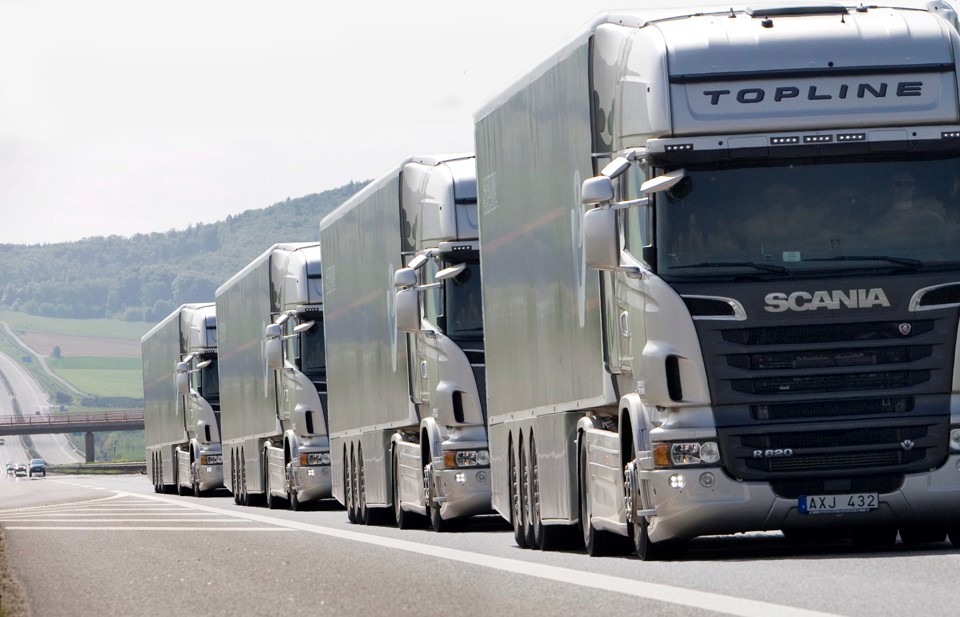



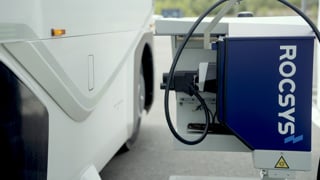

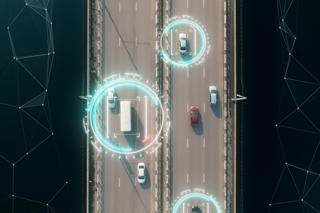
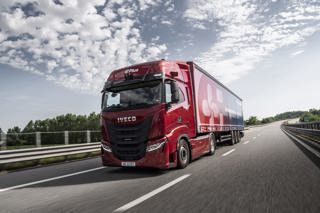
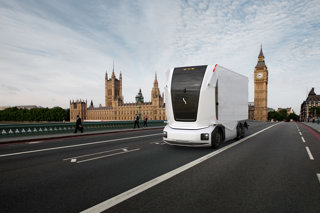













Ian Coleman - 17/09/2018 12:42
Making HGV's autonomous will not ease the driver shortage, as when the vehicle are not in convoy (e.g leaving or returning to depot) they still require a driver. also whilst in convoy they need a driver in case the vehicle in front leave the convoy. this is not rocket science and has been put forward by people that put information into computers, these machines can't cope with the idiots driver's that will still try and turnoff the motorway at the last second.